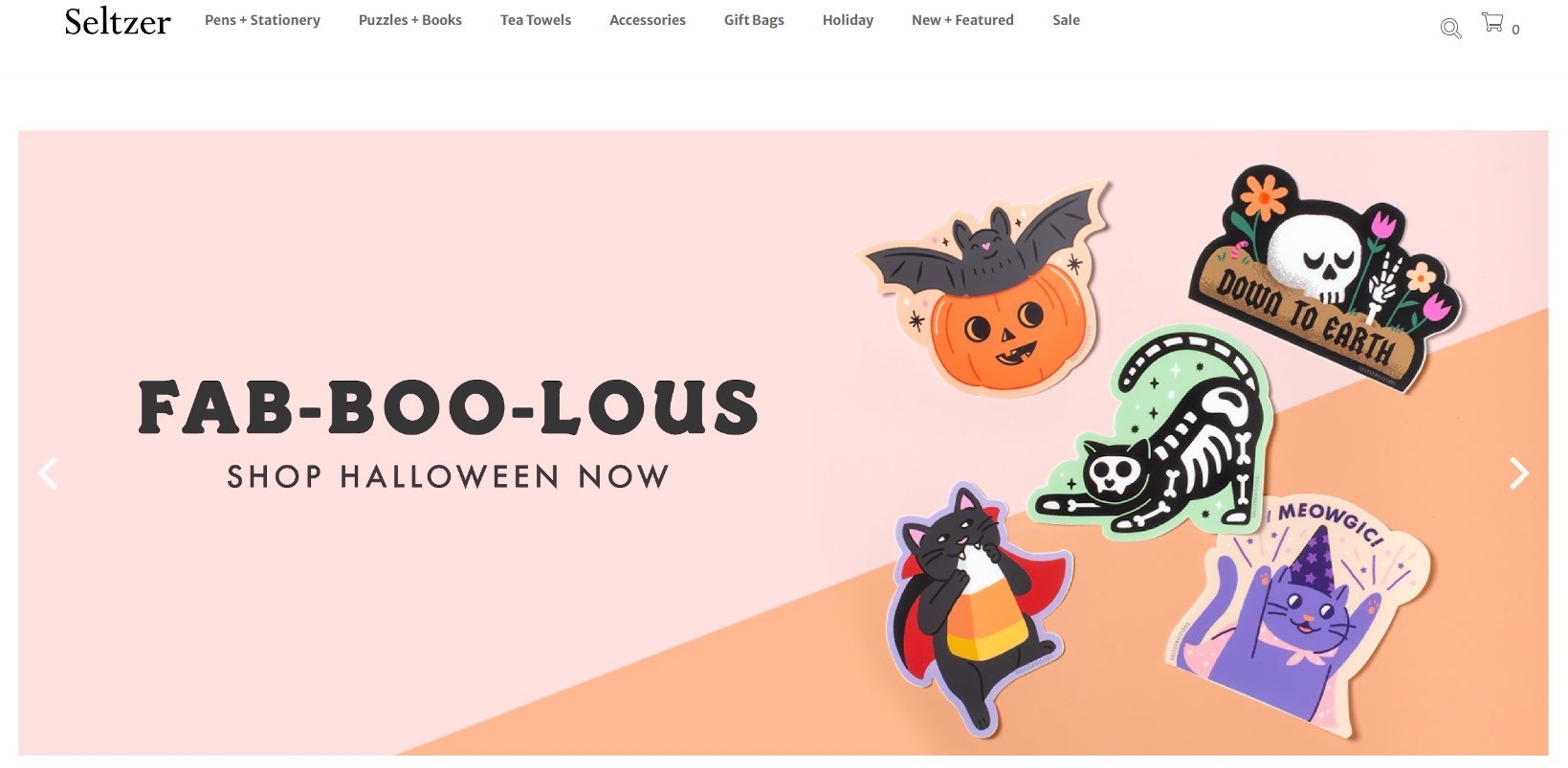Mastering ROAS Calculation: How to Measure Your Ad Spend in E-commerce & Why It Is Important
Monitoring the performance of your advertising campaigns is essential, but where should you begin? One of the most important metrics for measuring the effectiveness of your ads is ROAS. But what is ROAS, and why does it matter for your business?
ROAS, or Return on Ad Spend, is a key performance indicator (KPI) that measures the revenue generated for every dollar spent on advertising. In other words, it answers the question: Are your ads making you more money than they cost?
For businesses, especially in e-commerce, ROAS is essential because it directly reflects how well your advertising spend is being utilized. A high ROAS indicates that your ads are performing well and generating more revenue than they cost, while a low ROAS signals the need for optimization. Whether you’re advertising on platforms like Google, Facebook, or Instagram, understanding ROAS helps you allocate your marketing budget more efficiently and improve your overall strategy.
In this article, we’ll explain the ROAS formula and explore the ROAS calculation process. You will get the tools to measure your ad performance effectively, understanding what a good ROAS is.

Table of contents
ROAS Meaning: Understanding the Metric
So, what’s the deal with ROAS? If you’ve spent even five minutes in digital marketing, you’ve probably heard the term thrown around like confetti. But what exactly is ROAS?
Well, Return on Ad Spend is like a magic mirror — except instead of asking who’s the fairest of them all, you’re asking, “How much revenue did I make for every dollar I spent on ads?” And trust me, it’s just as important.
At its core, ROAS is a metric that shows how effective your advertising spend is. Simply put, if your ROAS is $5, that means for every $1 you spent on ads, you made $5 back in revenue. It’s a simple number, but it holds the power to tell you whether your ads are killing it… or just killing your budget.
ROAS vs. Other Metrics: The Battle of the Acronyms
You might be wondering, “Why does ROAS matter so much when we already have metrics like ROI and CPA?” Good question! Let’s break it down:
- ROAS vs. ROI: ROI (Return on Investment) is like the wise old grandfather of metrics. It looks at your total investment — whether it’s money, time, or resources — and tells you if it’s paying off. ROAS, on the other hand, is more like that hyper-focused friend who only cares about one thing: advertising. ROAS hones in on ad spend alone, giving you a laser-focused view of how well your ads are performing.
- ROAS vs. CPA: CPA (Cost Per Acquisition) measures how much it costs you to get a single customer or conversion. It’s great for seeing the cost-effectiveness of your campaigns, but ROAS takes it up a notch by showing you how much revenue those conversions are actually generating. In the world of e-commerce, it’s not just about getting customers — it’s about making sure they’re spending enough to justify your ad costs!
Why ROAS is Your Go-To Metric
Here’s why the ROAS calculation is the star of the show when it comes to ad performance: it directly tells you whether your ads are worth the spend. While other metrics help with understanding cost efficiency or overall investment returns, ROAS answers the most burning question: “Are these ads making me money or not?”
If you’re running an e-commerce business, ROAS is like the GPS that keeps your marketing budget from veering off course. A low ROAS? Time to reroute. A high ROAS? Full speed ahead!
In 2019, Airbnb reportedly saw a whopping ROAS of $10 for every $1 spent on Google Ads. That means they were essentially getting $10 back for every dollar they threw into the Google machine — talk about getting your money’s worth. On the other hand, the average ROAS across industries can vary wildly. We will focus on what a good ROAS is below.
Contextual Importance: ROAS in the Bigger Picture
In the grand scheme of digital marketing success, regular ROAS calculation acts like your go-to compass, helping you figure out where to invest your hard-earned dollars. But it’s not just about how much you’re spending — it’s also about how well you’re spending it. Even a lower-budget campaign with a high ROAS can outperform a massive spend with a mediocre ROAS.
And let’s face it, we all want to squeeze the most out of our ad spend, kind of like trying to get that last bit of toothpaste out of the tube. The more efficient your ads are, the better your ROAS — and the happier your bottom line.
ROAS Formula: Breaking it Down
Let’s get down to the heart of the matter — the ROAS formula. And don’t worry, this one won’t give you flashbacks to high school algebra. Spoiler: nor will the ROAS calculation. In fact, the ROAS formula is so simple, even a coffee-deprived Monday brain can handle it.
The Basic Formula: Easy as Pie (or Ads)
At its core, the ROAS formula is as straightforward as it gets:

It’s like baking a cake with just two ingredients — revenue and cost. If you made $500 in sales from a $100 ad campaign, your ROAS is 5:1. This means you earned five bucks for every single dollar you spent. Easy, right?
Variations: When the Formula Gets a Makeover
Now, while the basic ROAS formula is simple, there are variations depending on what your business wants to measure. It’s like customizing a pizza with all your favorite toppings — ROAS can adapt to your unique needs. Here are a few ways businesses might tweak the formula to achieve more precise ROAS calculation:
- Gross ROAS vs. Net ROAS: Gross ROAS just looks at total revenue, while Net ROAS gets a bit more finicky, subtracting the cost of goods sold (COGS) to give you a clearer picture of actual profit. It’s like the difference between admiring your paycheck and then crying when you see the taxes taken out.
- ROAS by Channel: You can break down ROAS by specific ad platforms, like Google Ads, Facebook Ads, or that random TikTok experiment you tried. This helps you figure out which platforms are delivering the best bang for your buck. Spoiler: TikTok might be the wild card here.
- Customer Lifetime ROAS: Some businesses take a long-term approach, calculating ROAS based on the customer’s lifetime value (CLTV). It’s like investing in a relationship instead of a one-time fling — sure, you might only make $10 now, but over time, that customer could bring in hundreds.
ROAS Calculation: How to Calculate and Understand the Numbers
So, we’ve cracked the code on the ROAS formula — but how do you actually calculate it in the wild? The good news is that ROAS calculation isn’t rocket science (unless you’re advertising space travel). In this section, we’ll guide you through the step-by-step process of calculating ROAS, explore how businesses track ad spending and revenue, and provide some useful tools to make your life easier.
Step-by-Step: Calculating ROAS like a Pro
Let’s break it down with an example. Imagine you’re running an ad campaign for your online store selling artisanal dog collars (because dogs deserve to look fabulous too). You spent $1,000 on Facebook ads, and as a result, you made $5,000 in revenue from all the proud pet owners. How to calculate ROAS? As simple as it could be:

This means for every $1 you spent, you earned $5 back. Not bad, right? Now you’re armed with a ROAS of 5, which tells you that your campaign is doing great. Time to celebrate!
Tracking Ad Spend and Revenue: Getting Precise
While the formula is simple, getting the numbers can be a bit trickier. Most businesses use tools like Google Ads and Facebook Ads Manager to track ad spending and revenue in real time. These platforms do the ROAS calculation for you, taking a lot of the manual guesswork out of the equation.
However, to ensure accuracy, it’s important to keep a few things in mind:
- Ad Attribution: Make sure that the revenue you’re tracking comes from the ads you’re measuring. No mixing up sales from organic traffic with your paid ad results!
- Time Frames: Ad campaigns often generate sales even after the ads have ended, so make sure you’re tracking performance for an appropriate time frame.
Fun fact: Businesses that accurately track their ROAS can improve their ad spend by up to 30%, simply by focusing on high-performing campaigns. It’s like discovering the cheat code for making your marketing dollars work harder.
Manual vs. Automated: Tools to Help You Calculate ROAS
While calculating ROAS manually is as easy as slicing bread, it’s not always practical, especially when you’re running multiple campaigns across various platforms. Thankfully, automation is here to save the day. Platforms like Google Ads, Facebook Ads, and Shopify offer built-in ROAS calculation, giving you real-time insights without the need for a calculator and a cup of coffee.
But if you like to do things the old-fashioned way (hey, some people still handwrite letters), here’s a quick guide to manually calculating ROAS:
- Gather Your Data: Find out how much you’ve spent on ads during a specific period.
- Track Your Revenue: Find out how much revenue those ads have generated.
- Apply the Formula: Divide revenue by ad cost, and voilà — you’ve got your ROAS.
Challenges in ROAS Calculation: The Devil is in the Details
As simple as the formula is, some common challenges can trip up even the most seasoned marketers. Beware the most common challenges in ROAS calculation:
- Data Discrepancies: Sometimes ad platforms like Facebook and Google don’t play nice with each other, and you may see slightly different numbers. Keeping your data consistent across platforms can be like herding cats.
- Attribution Windows: If a customer clicks on your ad today but buys something next week, does that sale count toward your ROAS? The answer depends on how you set up your tracking windows.
Real-world pro tip: Always double-check your attribution settings and make sure your tracking pixels are working. There’s nothing worse than leaving money on the table because your data was off by a couple of clicks.
Example Walk-through: Calculating ROAS for an E-commerce Campaign
Let’s walk through another example. You’re running an ad campaign on both Facebook and Google for your chic furniture store, “Sofa So Good.” You spent $1,500 on Facebook and $2,000 on Google Ads. Over the course of a month, Facebook generated $7,000 in sales, while Google brought in $9,000.
Here’s how you calculate ROAS for each platform:
- Facebook ROAS = $7,000 / $1,500 = 4.67
- Google ROAS = $9,000 / $2,000 = 4.5
Looks like both campaigns are performing pretty well, with ROAS numbers over 4, meaning your ads are more than paying for themselves. But this ROAS calculation unveils a tiny difference: Facebook slightly outperforms Google. Therefore, you might decide to shift more of your budget toward Facebook next month. Smart move!
What is a Good ROAS?
Ah, the million-dollar question (literally): what is a good ROAS? While we’d all love to say “the higher, the better,” the truth is that what counts as a good ROAS can vary wildly depending on your industry, your business model, and whether you sell hand-carved artisan soap or cloud software. So, let’s dive into the ROAS rabbit hole and figure out when your ad spend is hitting the mark and when you’re just throwing cash into the digital void.
Industry Benchmarks: What’s Considered Good in Various Sectors
The first rule of the ROAS club: not all ROAS benchmarks are created equal. What’s great for one industry might be terrible for another. Here’s a breakdown of typical ROAS benchmarks across various industries:
- Retail/E-commerce: In the world of e-commerce, a ROAS calculation that results in 4 is generally considered good. This means for every $1 you spend on ads, you’re pulling in $4 in revenue. Anything above 4 is a chef’s kiss, while anything below 2 is cause for concern (unless you’re running some serious branding campaigns).
- SaaS (Software as a Service): In the SaaS world, ROAS benchmarks are typically lower. A ROAS of 2:1 is often deemed good because of higher customer lifetime value (CLTV) and subscription-based models that deliver recurring revenue over time. In other words, SaaS businesses are playing the long game.
- Travel & Hospitality: The travel industry tends to see lower margins, so a ROAS of 3:1 is pretty solid. If you’re booking airline tickets or vacation packages, a higher ROAS can be tricky, but hitting 3:1 means your ads are working hard enough to justify the investment.
Contextual Factors: What Influences Your ROAS Goals?
The thing about ROAS is that it’s not a one-size-fits-all metric. Your goals might shift depending on several key factors:
- Profit Margins: Businesses with slim profit margins (like retail) typically need a higher ROAS to make their ad spend worthwhile. A luxury goods company with high margins might be okay with a lower ROAS because they still make significant profits off each sale.
- Stage of Growth: Startups or companies in aggressive growth mode might settle for a lower ROAS as they focus on acquiring customers rather than short-term profits. Think of it as the business equivalent of sacrificing sleep for caffeine-fueled productivity — it’s all about playing the long game.
- Ad Objectives: Not all campaigns are created with the same goal in mind. If your ad campaign is designed for branding and awareness, your ROAS might be lower because the immediate revenue isn’t the priority. In contrast, direct-response campaigns need a higher ROAS because you’re looking for quick conversions.
Good vs. Great: When Is ROAS Sustainable?
So, what’s the difference between a “good” ROAS and a great ROAS? Let’s put it this way: a good ROAS is enough to keep your business profitable and your ad spend justified. A great ROAS, on the other hand, is when your ads are essentially printing money.
For most businesses, a ROAS of 3:1 to 4:1 is the sweet spot for profitability and sustainability. , for example, experienced a strong 4.5X ROAS during a Facebook ad campaign. The brand targeted audiences who engaged with their website and social media, proving that even with minimal ad spend, businesses can generate impressive returns when they focus on retargeting high-intent users.

Anything below 3:1, and you might need to reconsider your ad strategy. But a ROAS of 5:1 or higher? Now we’re talking about next-level marketing success — the kind that lets you call your finance team and say, “Hey, we’re going to need a bigger budget.”
ASOS, for instance, achieved significant results with a cross-channel marketing strategy, integrating various customer touchpoints. Although the exact ROAS calculation is not publicly available, ASOS is known to have generated through personalized marketing campaigns, which likely included high ROAS from their retargeting ads.

Key Takeaway: There’s no “one-size-fits-all” ROAS, but knowing what’s considered “good” for your industry and business model will help you set realistic goals. Whether you’re gunning for a ROAS of 3:1 or dreaming of 10:1, tracking and optimizing your ad performance is the key to getting there.
Conclusion: The Power of ROAS in Shaping E-commerce Strategies
As we wrap things up, let’s take a moment to appreciate just how much Return on Ad Spend truly matters. In the e-commerce domain, where every dollar counts, ROAS isn’t just another metric — it’s your marketing GPS. It shows you where to invest, when to pivot, and how to ensure your ad dollars are giving you the most bang for your buck.
Think of ROAS as the ultimate report card for your ad campaigns. A strong ROAS means your campaigns are making you money, while a weak ROAS is basically telling you, “Hey, maybe stop throwing cash into that pit.” And that’s why regular ROAS calculation and optimization are essential.
But how do you get those numbers climbing? Here are a few ideas to help supercharge your ROAS:
- Double Down on What’s Working: Analyze your platforms and channels. If Facebook is bringing home a ROAS of 5:1 and Google is lagging at 2:1, it might be time to shift that budget. More money where it’s already working? Yes, please.
- Embrace Retargeting Like a Pro: Remember those shoppers who came to your website but didn’t buy? Retarget them! Studies show that retargeting ads often bring in a ROAS much higher than standard prospecting campaigns.
- Keep Testing, Always Testing: Experiment with different creatives, ad copy, and audience segments. Small tweaks can lead to big ROAS improvements. Maybe that cat meme ad really will outperform the serious product shot — don’t knock it until you try it.
- Optimize Your Funnel: The smoother your customer’s journey from click to checkout, the better your ROAS. Streamline your landing pages, simplify your checkout process, and get rid of any friction that might make a customer bounce before buying that artisanal dog collar.
ROAS is the king of e-commerce metrics because it speaks directly to what matters most: your bottom line. Whether your ROAS is solid or needs some serious TLC, tracking it regularly will ensure your ad spend is working as hard as it should be. So, keep those ads running, that ROAS growing, and your e-commerce strategy thriving.
Now, go out there and let your ads earn you more than just clicks — let them rake in the cash too.









